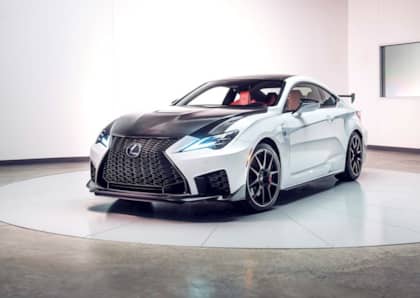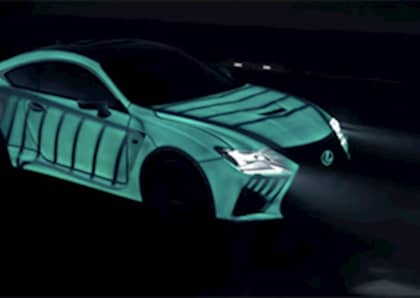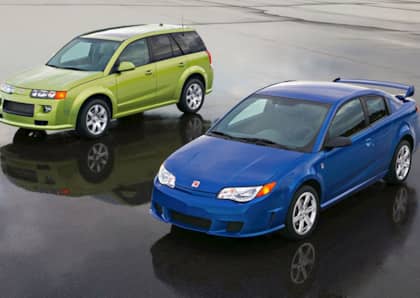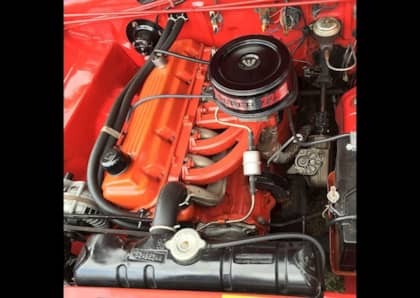3 Sports Cars Built From The American, German, and Japanese Parts Bin
Ahh, the parts bin. Is there a more reliable shortcut to sports car success? While platform sharing is a common automotive industry practice, there are a handful of performance models out there that took things to the extreme by snagging an engine here, a chassis there, and then putting the interior bits in a bag, shaking them up, and dumping them in the cockpit.

The end result? 'Instant sports car.' These platform mutts strove to rise above the sum of their parts and deliver the kind of fun and impressive driving experience enthusiasts are looking for—but as we're about to see it didn't always work out for the best each and every time the engineering team got a little lazy and leaned on past success to develop future product.
Pontiac Solstice / Saturn Sky
When the Pontiac Solstice (and its Saturn sibling, the Sky) appeared for the 2005 model year, it was the first two-seat sports car produced by the brand since the ill-fated Fiero. The Solstice roadster (which would towards the end of its short lifespan also be joined by a hardtop coupe) featured a unique hydroformed frame (the Kappa platform) that was hand-welded together around a boxed tunnel and book-ended by the windshield and the bulkhead that separated the trunk from the passenger compartment.

The rest of the Solstice, however, was exclusively brother-from-another-mother. Although top-tier GXP trims got a hot 260 horsepower, 2.0-liter turbocharged Ecotec four-cylinder engine, most versions of the car shared their 2.4-liter four-banger with almost every other small car in the General Motors fleet—including laggards like the Chevrolet HHR and the Pontiac G6.

Its 5-speed manual gearbox was sourced from the automaker's mid-size pickup lineup, while the optional automatic was lifted from Cadillac (as were its differential and axles). Inside, the car was a mix of Chevrolet Cobalt, Hummer H3, Pontiac G5, and even Cadillac XLR. While the sheet metal was largely bespoke to the Solstice, lighting was borrowed from GMC and Pontiac.

The Solstice was a last-ditch effort to give Pontiac some personality, but it's clear that GM was unwilling to invest much more beyond its basic platform and its turbocharged EcoTec. Although power was good, would-be buyers were frustrated by a trunk that virtually disappeared when the convertible's top was down, along with relatively muted handling chops due to its near-3,000 lbs of curb weight. A more focused effort might have saved the Solstice from doom when the curtain came down on Pontiac at the end of the decade.
BMW Z3
What is it with car companies trying to assemble roadsters like Lego? The BMW Z3 was the first vehicle produced by the German brand at its American plant in Spartanburg, South Carolina, and the process of getting this convertible (and later coupe) from the drawing board to the asphalt relied on a major assist from not one, but two pre-existing BMW platforms.

Most of the Z3's underpinnings could be traced back to the E36-generation BMW 3 Series, which had debuted just a few years before the Z3's 1996 on-sale date. This in itself was not unusual; BMW hadn't sold a roadster in North America in decades, and rather than run the risk of failure with an expensive, all-new design, it selected its most recent two-door chassis (which had an excellent reputation as a balanced handler).

There's a crucial difference between the Z3 and the E36, however, and that's its rear suspension system. With the current 3 Series design taking up too much space in what would be the Z3's already vestigial trunk, BMW swapped in the less-sophisticated trailing arm setup carried over from the older, E30-generation sedans and coupes.

This suspension sleight-of-hand would impact the BMW Z3 in more ways than one. Frankensteining the two platforms together created a situation where the rear subframe wasn't capable of handling the strain of high performance driving, having never been designed to withstand the new forces exerted by the E30 transplant. On the Z3 M cars especially (which featured significantly more horsepower than the base model), it wasn't uncommon for subframes and floorpans to violently separate, tearing apart and requiring expensive repairs. A cottage industry bracing the Z3's delicate bits prior to their divorce quickly sprouted up for anyone who planned on thrashing the sports car on a track or twisty road.

One more, less-mentioned casualty of the Z3's parts-bin roots is its original engine. The car was offered exclusively with a 1.9L, 138 hp four-cylinder motor in its first year of production, a lifeless lump lifted from one of BMW's more economy-minded efforts. It would be a full year before the Z3 received a 2.8-liter straight six that would add 190 horses and significantly more torque to the package, vastly improving its personality and transforming what could have been a disaster into an enduring icon for fans of the brand.
Lexus RC F
The Lexus RC F was the logical, two-door successor to the Japanese company's IS F performance sedan, which had preceded it by several years. Featuring the same fire-breathing, 467 horsepower 5.0-liter V8, the RC F's striking looks and gobs of torque (389 lb-ft) made it seem like a lock for fans of sophisticated luxury sports coupes and muscle cars alike.

Unfortunately, the RC F's 'design by committee' platform left something to be desired when it came to its driving dynamics. You see, Lexus originally planned to create a convertible version of the standard RC, which led the product team to specify a chassis that was strong enough to stay rigid even with the top removed. In an effort to satisfy this requirement, Lexus engineers would grab the rear half of the similarly-sized IS sedan, the front suspension from the larger GS sedan, and then bridge them together with the mid-section of the previous-generation Lexus IS C (which was what the automaker's convertible had been previously called).

If all of that sound a little clunky to you, you're right —and the RC F paid a price, particularly when it came to weight. As it turns out, a convertible version of the car was nixed at the last minute and so the coupe ended up being much heavier than it needed to be with all of that structural stiffness stuffed into its IS C-sourced center. The coupe tipped the scales at just over 3,900 lbs, which made it more than a little unwieldy as a track toy and somewhat slower than it should have been in a straight line, condemning Lexus' would-be muscle machine to be more high-priced cruiser than sports car.
More From Driving Line
- Sometimes, cars snag their bits and pieces from the most unlikely sources. Check out these 7 unlikely automotive organ donors.











